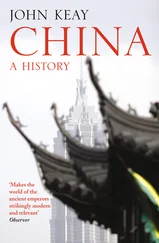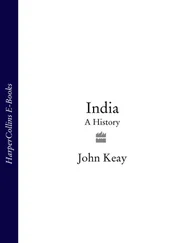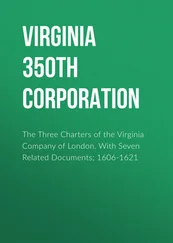1 ...6 7 8 10 11 12 ...35 Such men were usually senior members of one of the City’s livery companies and leading figures in some line of business that was relevant to the Company’s. Thus Alderman Sir Thomas Smythe, the Company’s first governor, was also involved in the Levant Company, previously the main importer of Eastern produce, in the Muscovy Company and in settlement projects in North America. On and off he held the governorship until 1621. Three years later Sir Morris Abbot, also of the Levant Company and also a founder member of the East India Company, succeeded. Abbot, originally of the Mercers’ Company, operated a large export business in cloth, indigo and spices. Retiring in 1638 to become Lord Mayor of London, he was succeeded first by Sir Christopher Clitherow and then by Sir Henry Garraway, both leading City merchants and both themselves ex-Lord Mayors. Other directors had financial interests in Europe’s capitals whence the supply of rials for export must be obtained and whither the Company was now looking to re-export its Eastern imports. In other words these City interests saw English participation in Eastern trade in an international context and attached more importance to its ramifications in terms of borrowing, shipping and commercial requirements than they did to the profit or loss on a single cargo. They took a longer view of the Company’s prospects and a broader view of its role in the national economy.
The potential for conflict between the Company’s management and the majority of its shareholders stemmed also from a flaw in its structure. The organization of the Company is usually characterized as a half way stage in the evolution of the medieval guild into today’s public limited company. It is also regarded as the most sophisticated example of an Elizabethan chartered company; and certainly it was significantly different from most of its Tudor predecessors. An organization such as the Levant Company was more like a regulatory body, licensing and governing the commercial activities of its members who formed individual syndicates to raise capital and trade on their own account. The Levant Company was not itself an operational concern and in this respect resembled the guilds of old.
In contrast the East India Company was both regulatory body and sole operator. In recognition of the national importance that attached to its activities and of their long term, high risk nature which must involve considerable overheads – shipping, factories – it was accepted that the Company, and the Company alone, must itself conduct all business. From this it followed that raising capital must also be on a corporate basis. And thus, as the directors put it, ‘the trade of the Indias being so far remote from hence [it] cannot be traded but in a joint and united stock.’ Theoretically this opened the Company’s membership to any who were willing to subscribe and indeed, initially, subscription was the commonest avenue of induction into the Company. This remained the case during the boom years of 1610-20 and the bust years of mid century. But later it would work the other way. Come the Restoration, when profits became more dependable and stock less terminable, the privilege of subscribing to new stock was effectively restricted to existing shareholders.
Perhaps the most significant point about the Company’s organization is not where it stood in the evolutionary chain of commercial institutions but the extent to which this organization itself evolved. For though indeed a self-declared joint stock company, it began operations more like a regulated company. One third of those who first petitioned for a charter were, like Sir Thomas Smythe, members of the regulated Levant Company. They included its treasurer, its governor, and two of its founders. Initially the two organizations shared the same secretary and even used the same correspondence book. The Court of Committees and its numerous sub-groups met in Sir Thomas Smythe’s house, which doubled as the Company’s headquarters until Smythe’s retirement in 1621. Even by then the Company’s permanent London staff consisted only of the secretary, a beadle, a book-keeper-cum-accountant, a cashier, a solicitor and a ‘ship’s husband’ (who organized the provisioning, loading and unloading of fleets). Almost an offshoot of the Levant Company then, the East India Company was expected to operate with the minimal staff and informal arrangements typical of a regulatory body.
Consistent with such traditional thinking the Company had begun life with no fixed capital, the idea being simply to raise a separate stock for each voyage; hence the expectation by investors in the First Voyage of a speedy pay-out. Since a willingness to invest in further voyages depended on the success of previous ones, this ad hoc system bred uncertainty and delay; and because in uncertain times new subscriptions were often hard to realize, it also put an additional strain on relations between the directors and the majority of shareholders.
The normal procedure for raising a new subscription began with the Court of Committees recommending a new voyage to the General Court. If the idea was approved, a target figure was set and a subscription book was opened. It was first taken round by the Company’s beadle; then, assuming the target figure was not already reached, it was taken up by the Committees who privately urged its merits on those susceptible to pressure. Such arm-twisting usually proved effective, but there was still the problem of actually collecting the subscribed sums. They were called in by instalments as and when expenditure was required. But late payment frequently necessitated heavy borrowing, and non-payment obliged the Committees to petition the Privy Council for injunctions against the defaulters.
Prosperous times would, of course, make for more amicable relations; from 1609-16 the subscription books would fill readily enough. But in 1601-3, while the fate of the First Voyage was still unknown, the General Court had refused to hear of a new venture round the Cape. Even when Lancaster returned and a second voyage was at last approved, the new subscription brought in only £11 ,000 against the £60,000 subscribed for the First Voyage. It was in this crisis that the Court of Committees insisted that investors in the First Voyage support the Second to the tune of £200 for every £250 previously subscribed. It was not a popular move and it would appear that it was strongly resisted. For whereas the First Voyage had exported freight, mostly silver, to the value of over £28,000, the Second carried only £12,000. Assuming that, as with subsequent stocks, up to two thirds of the total subscription went on fixed costs and shipping (including provisioning, manning, armaments, etc) and little more than one third on exports, the sum actually realized cannot have exceeded £40,000.
In this fraught climate Henry Middleton, brother of Lancaster’s second in command and captain of the Susan on her return voyage, received his orders as commander of the Second Voyage. Not surprisingly he was instructed to make the Spice Islands his priority and to bring back cloves, nutmegs, mace, cinnamon, raw silk – anything rather than pepper. He was also to avoid ‘refreshing’ at Table Bay, presumably because of Lancaster’s near-disaster off the stormy Cape, and to forgo taking any Portuguese prizes, peace negotiations with Spain-Portugal being near a happy conclusion. Far from capitalizing on the successes of Lancaster’s voyage, Middleton was in effect to make good Lancaster’s failures. With the same four ships, a similar complement and a similar mix of cargo and bullion, he sailed from Gravesend on 25 March 1604.
Four months later the long bluff of Table Mountain hove above the horizon. Already sixty of the Red Dragon’s men were down with scurvy including Middleton. ‘Perusing their pitiful complaint and looking out his cabin door where did attend a swarme of lame and weake diseased cripples’ he decided to ignore orders and succumb to the temptation of fresh fruit and red meat. They spent nearly five weeks in Table Bay. The sick recovered and Middleton began to exhibit that spirited conduct which would characterize his later career. He organized a rather amateurish ambush of the Saldanian herdsmen and very nearly came to grief in an epic struggle with a mother whale. Thence, without stopping at Madagascar, the fleet made straight for Bantam, arriving, once again crewed by ‘diseased cripples’, on 22 December 1604.
Читать дальше












